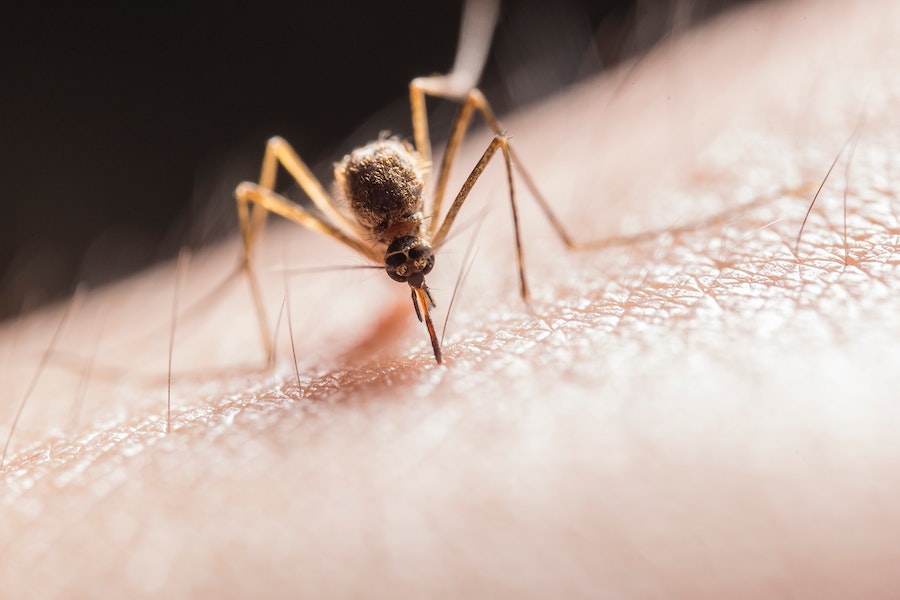Crane flies, with their delicate appearance and long, slender legs, often evoke curiosity and fascination among observers. As warm weather approaches and mosquitoes become a prevalent concern, the question arises: Do crane flies play a role in controlling these pesky bloodsuckers? With public health and environmental balance at stake, understanding the feeding habits of these enigmatic insects becomes essential. In this article, we delve into the world of crane flies and their dietary preferences to shed light on whether they act as natural predators of mosquitoes. Through scientific evidence and a critical examination of prevailing myths, we aim to uncover the truth about crane flies’ potential contributions to mosquito control and their significance in the broader ecosystem.
Do Crane Flies Eat Mosquitoes?
Crane flies do not eat mosquitoes. Despite their similar appearance to mosquitoes, crane flies are harmless insects that do not possess the necessary mouthparts to consume other insects or prey. Crane flies feed on nectar and plant matter during their relatively short adult lifespan. While they may be mistaken for mosquito predators due to their resemblance, it is essential to understand their distinct ecological roles. Crane flies are valuable pollinators and serve as a food source for various predators in the ecosystem. Regarding mosquito control, other natural predators and integrated pest management strategies should be considered to tackle the issue effectively.
What Are Crane Flies?
Crane flies are slender and delicate insects belonging to the family Tipulidae, known for their long, fragile legs that resemble those of a crane. Often mistaken for large mosquitoes due to their similar appearance, crane flies are harmless and do not bite or sting. They typically have slender bodies and long wings, making them proficient fliers. Found in various habitats worldwide, crane flies play essential ecological roles as pollinators and contribute to nutrient recycling through their larvae. Their life cycle involves egg, larval, pupal, and adult stages, and they primarily feed on nectar and plant matter during their brief adult phase.
Differentiating Crane Flies From Mosquitoes.
Crane flies, and mosquitoes share a resemblance in their appearance, leading to frequent misconceptions and confusion between the two. However, several key characteristics can help differentiate crane flies from mosquitoes:
Body Shape: Crane flies typically have a more elongated and slender body than mosquitoes. They have a delicate and fragile appearance, while mosquitoes tend to have a more robust and compact body structure.
Legs: One of the most noticeable differences lies in their legs. Crane flies have long and slender legs, often resembling the legs of a crane, which is how they get their name. On the other hand, mosquitoes have relatively shorter and sturdier legs, well-adapted for perching and moving on various surfaces.
Mouthparts: The mouthparts of crane fly and mosquitoes are significantly different. Crane flies sponging or siphoning mouthparts, used primarily for feeding on nectar and plant juices. They are harmless to humans as they do not possess the piercing and sucking mouthparts that mosquitoes use to feed on blood.
Behavior: Crane flies are typically docile and non-aggressive insects. They do not bite or sting, making them harmless to humans and animals. In contrast, female mosquitoes require blood meals for egg development, so they can bite and feed on the blood of humans and other animals.
Wings: Cranes, flies, and mosquitoes have two pairs of wings. However, the wings of craneflies are often more prominent and longer, extending beyond the abdomen. In contrast, the wings of mosquitoes are more equal in length and do not extend significantly beyond their bodies.
Life Cycle: While the life cycle of crane flies and mosquitoes share some similarities, such as undergoing complete metamorphosis, their development and habitat preferences differ. Crane fly larvae are often found in moist soil or aquatic environments, feeding on organic matter. In contrast, mosquito larvae thrive in standing water sources, developing into pupae before becoming adults.
Crane Flies’ Diet And Feeding Behavior
Crane flies have a predominantly vegetarian diet during their adult stage. Their feeding behavior is adapted to consuming plant juices and nectar. Unlike mosquitoes, they do not have biting or piercing mouthparts, making them harmless to humans and animals. The diet and feeding behavior of crane flies can be summarized as follows:
Nectar Feeding:
As adult insects, crane flies primarily feed on nectar from flowers. They use their long, slender snout or mouthpart to access the sugary fluid inside flowers. By doing so, they act as essential pollinators, transferring pollen from one flower to another, contributing to plant reproduction and genetic diversity.
Plant Juices:
Besides nectar, some crane fly species may feed on plant juices and other sweet substances found on leaves, stems, and fruits. Their mouthparts are well-suited for siphoning fluids from plant tissues.
Non-Predatory Behavior:
Unlike mosquitoes and other blood-feeding insects, crane flies do not prey on other organisms, including mosquitoes. They lack the physical adaptations and behavior necessary for hunting, capturing, and consuming other insects or vertebrates.
Short Adult Lifespan:
Adult crane flies have a relatively short lifespan, typically lasting only a few days to a few weeks, depending on the species. During this time, their primary focus is on mating and feeding to sustain their energy levels.
Misconceptions And Myths
Misconceptions and myths surrounding crane flies and their behavior has contributed to misunderstandings and misinformation. Some common misconceptions and myths include:
- One of the most prevalent misconceptions is that crane flies are oversized mosquitoes. While they share a similar appearance due to their long legs and delicate bodies, crane flies are entirely harmless and do not possess the ability to bite or feed on blood.
- Some people mistakenly believe that crane flies are dangerous and may cause harm to humans or animals. In reality, crane flies are harmless and do not threaten people or pets.
- There is a popular myth that crane flies are natural predators of mosquitoes and help control mosquito populations. However, this is not true. Crane flies have a vegetarian diet and do not feed on other insects, including mosquitoes.
- Another misconception is that crane fly larvae (leather jackets) cause significant damage to lawns and gardens. While leather jackets may feed on grassroots in certain situations, their impact is generally less severe than some believe, and they play a role in nutrient recycling.
- Some people may associate crane flies with disease transmission, similar to mosquitoes. However, crane flies are not disease vectors and do not transmit any illnesses to humans or animals.
- Some believe adult crane flies die shortly after mating. While the adult lifespan of crane flies is relatively short, it is not solely due to mating. Like many insects, their lifespan is influenced by various factors, including environmental conditions and predation.
Environmentally Friendly Ways To Reduce Mosquito Populations
Reducing mosquito populations through environmentally friendly methods is crucial to maintain a balanced ecosystem while minimizing the use of harmful chemicals. Here are some practical and eco-friendly ways to achieve this:
Mosquitoes breed in stagnant water, so eliminating potential breeding sites is essential. Regularly inspect your property for items that can collect water, such as old tires, buckets, and clogged gutters. Empty, remove, or turn over these items to prevent water accumulation.
Encourage the presence of natural mosquito predators in your yard. Dragonflies, birds, bats, and certain fish species feed on mosquito larvae and adults. Create a habitat that attracts these predators, such as providing birdhouses or installing a bat box.
Beneficial bacteria-based larvicides, such as Bacillus thuringiensis israelensis (Bti) or Bacillus sphaericus (Bs), can be applied to standing water where mosquitoes breed. These substances are non-toxic to humans, pets, and most non-target organisms.
Use mosquito nets over beds and windows to prevent mosquitoes from entering living spaces while allowing proper ventilation. This is especially important in areas with high mosquito activity and disease transmission risk.
Trim and manage vegetation around your property to eliminate potential resting and breeding sites for adult mosquitoes. Proper landscaping can also improve air circulation, making the environment less favorable for mosquitoes.
Planting mosquito-repelling plants like citronella, lavender, and lemongrass can help deter mosquitoes from the area. Additionally, natural repellents from essential oils, such as lemon eucalyptus or neem oil, can be effective and safer alternatives to chemical repellents.
Conclusion
Understanding the nature of crane flies and their feeding habits has shed light on the common misconception of them being voracious mosquito predators. Crane flies, with their delicate appearance and vegetarian diet, are harmless insects that do not pose a threat to humans or animals. While they share similarities in appearance with mosquitoes, they serve as valuable pollinators, contributing to plant reproduction and ecological balance. When seeking environmentally friendly ways to reduce mosquito populations, it is essential to focus on holistic and non-toxic approaches. By eliminating standing water, encouraging natural mosquito predators, and using non-harmful larvicides, we can effectively control mosquito populations while preserving the delicate ecological balance.
FAQ’s
Does crane fly larvae (leatherjackets) damage lawns?
While crane fly larvae may feed on grassroots in certain situations, their impact is generally less severe than some believe. Proper lawn care and maintenance can mitigate any potential damage.
What are the ecological roles of crane flies?
Crane flies play crucial roles in pollination by feeding on nectar and transferring pollen between flowers. Additionally, their larvae (leather jackets) contribute to nutrient recycling in the soil.
How can I control mosquito populations in an eco-friendly way?
Some eco-friendly methods to reduce mosquito populations include eliminating standing water, encouraging natural mosquito predators, using non-toxic larvicides, installing mosquito nets, and using natural repellents.




















Leave a Reply